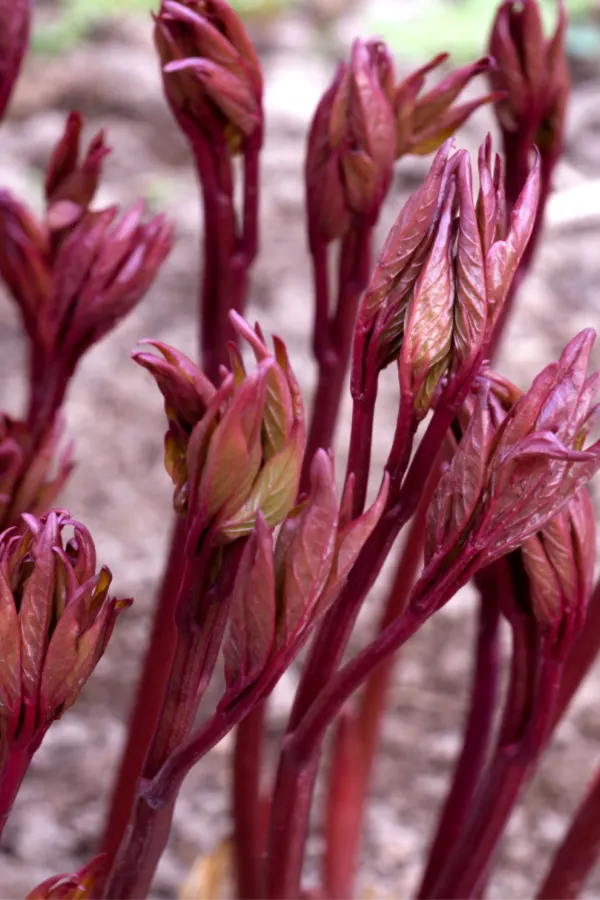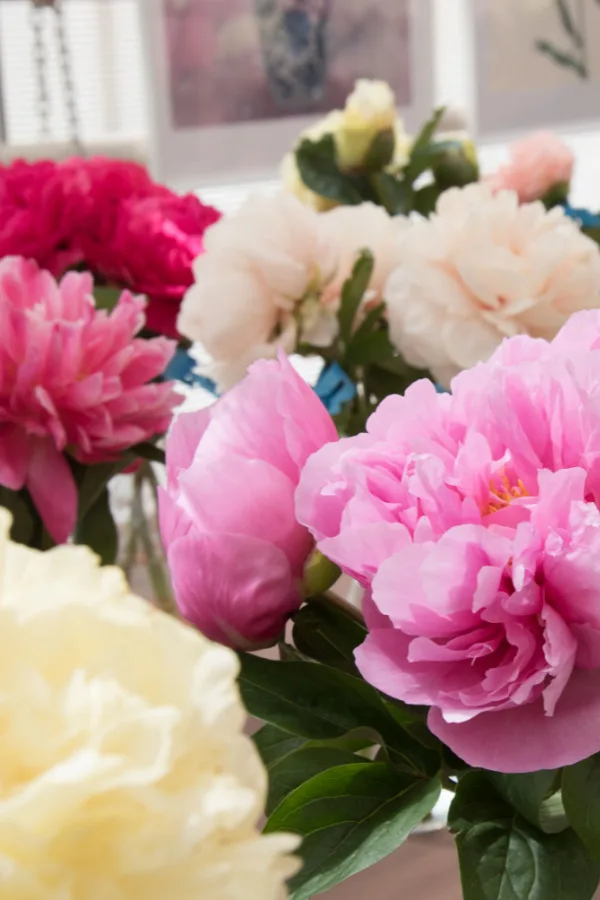Looking for a few tips and tricks for how to get your peonies to bloom and flower big every single spring – year after year?
Peonies can produce an incredible flush of bright, vibrant blooms in the spring or early summer. The flowering perennial is usually one of the first bushes to fill with color. In fact, depending on the variety and the climate, peonies can bloom as early as April or as late as mid June. And when they do, it’s a sight to behold!
Peonies also happen to be long lasting too. Once established and when cared for properly, they can actually bloom for 50 to 100 years in the same location. But as beautiful as they can be, peonies can be quite frustrating for gardeners when they struggle to bloom with vigor, or in some cases, fail to flower at all.

Why Peonies Fail To Bloom
When peonies fail to bloom, or flower with a lackluster show of color, the problem can usually be traced back to a few basic issues. The good news? They really are quite easy to fix. And once you do, you can all but ensure your peonies will bloom with gusto from there on out!
The biggest culprit for struggling peony bushes is most often related to the care the bush receives at three critical times – right before it should bloom, right after it blooms, and right before winter arrives. Not only do all three play a huge role in the plant’s health and vitality, they also are important for whether the bush will flower the following year as well.
With peony blooming success in mind – here is a look at how to properly care for your peonies to prepare them to bloom like never before!
How To Get Peonies To Flower Big – Year After Year!
First, let’s take a look at the three simple but critical care times for your peonies, followed by a look at a few additional culprits that often end up being the root cause of a peony bush your peony not blooming or not blooming well.
It all starts with making sure you are fertilizing your peonies at the right time – with the right fertilizer!
Fertilizing Peonies For Success
The most important time to fertilize your peonies is right before or just as the bush is beginning to break through the ground in very early spring. By fertilizing at this point, it gives the plant power right when it needs it most, as it prepares to create blooms for late spring.
It’s important to power your bush very early in the spring. Waiting until it is fully out and starting to form blooms will be too late to help with this year’s flowers. Secondly, it’s also important to give your peonies the right kind of fertilizer.
One of the best fertilizers to use for peonies is bone meal. Bone meal helps peonies to re-energize the roots of the plant. And it does so in a way that the plant can readily absorb and use the power. (Affiliate Product Link: Jobe’s Organic Bone Meal)
As an alternative, you can also use slow release granular fertilizers. But when doing this, it’s important to select a fertilizer that has a lower nitrogen content. A fertilizer of 5 (nitrogen) – 10 (potassium) – 10 (phosphorous) is the way to go for maximum benefit for peonies. If the nitrogen number is too high, all you will do is grow dark green foliage – with little to no flowers.
Fertilizing After Your Peonies Bloom
Beyond early spring, there is only one other time you want to fertilize your peonies, and that is right after they finish blooming. You can once again use bone meal or a slow release granular fertilizer.
By fertilizing right after it blooms, you allow the plant’s roots to refuel. But even more, they also will begin storing extra energy in their roots. And that energy will help more than ever for next year’s flowering cycle.

One thing to never do is fertilize your peonies in late summer or in the fall. Doing so will promote unwanted growth that uselessly burns stored energy. That, in turn, will mean less blooms and flowers next year.
Fall Peony Care For Bushes
We have covered the importance of fertilizing prior to the peony coming out, and after it finishes blooming – but there is a third chore that is equally important for strong blooming year after year. And that chore is to always make sure to cut down your plants in late fall before winter arrives.
For peony bushes, their foliage dies off after the first hard frost or freeze. When it does, it’s time to cut it back to about ½ inch above the ground.
By pruning the peonies stems and foliage off a this point, it allows the bush to save all of its energy exclusively for its roots, and not waste it trying to heal, protect or support dying and decaying foliage. Even more, cutting it off means pests can’t feed from it. Nor will they take cover in the soil around it to come back next year.

When Peonies Fail To Bloom
In addition to proper feeding and pruning, sometimes peonies fail because of where they grow or how they were planted. Plain and simple, if peonies are planted in the wrong location, in the wrong soil, or too deeply for that matter – they won’t bloom well. No matter how you fertilize, water or take of them.
With that in mind, here is an in-depth look at some basic culprits that could be causing your bush to fail to flower as well.
The Importance Of Soil, Sunlight & Planting Depth
Where you plant peonies is very important to ensure that they become established and continue to thrive year after year. Peonies like soil that is loose, fertile, and humus-rich. If they are growing in hard, non-porous and nutrient poor soil, the bushes will struggle to bloom.
In addition to good soil, peonies need to be getting at least 6 to 8 hours of daily sunlight. And it’s best if most of that is coming in the morning. If they have too much shade, or too much afternoon hot sun – they simply will not bloom well.
Last but not least, it is vital that the roots of your peonies have not been planted too deep in the ground. Peonies need to be planted only a few inches under the top of the soil – and no more. Believe it or not, when peonies are planted to a depth of four or five inches – they simply won’t bloom!

So how do you fix any of the above issues if they apply? The best thing to do is dig up your peonies and replant them to an area with favorable conditions – whether it’s to place them in a location with better soil, the right type of sunlight, or replanting at a more shallow depth.
When To Transplant – How To Get Your Peonies To Flower Big
You can transplant or plant new peonies in the spring, but waiting until fall is best. Peonies transplanted in spring will not flower in the same season and may not flower the following year. The stress of going through a hot summer is also very hard on them.
By planting in the fall, you allow the roots to have plenty of time to reestablish in cooler weather before going dormant for the winter. They can then rest and chill in the soil, which is necessary for the bush to produce its blooms. (For more, see: “How To Divide Peonies In The Fall”)
Whenever you plant, water deeply and keep the ground fairly moist. Peonies require about an inch of rainfall or watering throughout the growing season. As with most plants, water peonies at the base of the plant. It’s also best to water early in the morning or late at night.
Here is to getting your peonies to flower and bloom big year after year!
For more info on how to keep your peonies healthy, check out our article: The Secret To Fertilizing Peonies – Power Up Your Peonies Before Spring Arrives!
Follow Our Facebook Page For Even More Great Tips! Simple Garden Life Facebook Page
Simple Garden Life is a website dedicated to keeping gardening fun, simple and enjoyable! We publish two new articles each week along with a new garden podcast episode every two weeks. This article may contain affiliate links.

